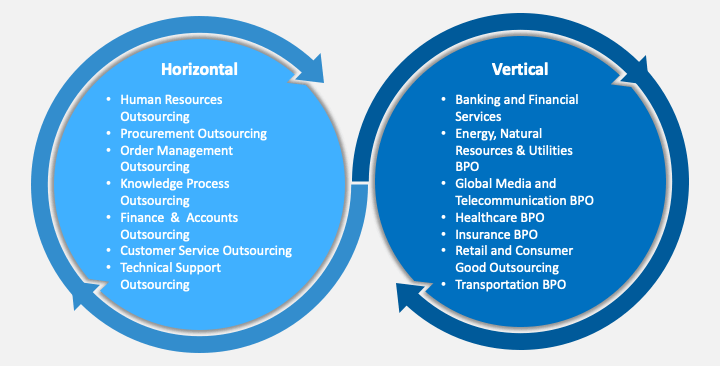
BPO examples are important to know.
Why?
At one point or another, many businesses reach a stage where they need to delegate some intensive processes to another provider.
This delegation, usually called Business Process Outsourcing (BPO), helps small businesses avoid hiring full-time teams to manage and measure the performance of different business processes. BPOs offer benefits from cost savings to a strong competitive edge, and they can help new and upcoming businesses grow more efficiently.
Delegating one or more business processes doesn’t come without risks, though.
For every function or process that a business outsources to an external provider, the more organizational information they potentially jeopardize. The greatest threats to BPO, chief among them hidden costs that come with outsourcing, can severely damage a business’s customer push-back and satisfaction rates.
To that end, let’s explore the main risks involved in BPO projects and how to mitigate them, as well as get a quick intro to BPO with specific examples and benefits.
BPO examples
Let’s break down BPOs into two categories:
- Horizontal BPOs
- Vertical BPOs
These types of BPO initiatives differ based on the industries they impact, so it’s a good idea to go over examples of both.

Horizontal BPO examples
Horizontal BPOs apply to a range of industries.
One of the most common examples in this category is a business outsourcing its hiring process. This business picks an external provider that can hire and onboard people; this team then performs its duties separately from the hiring party.
Vertical BPO examples
Vertical BPOs, on the other hand, deal with the knowledge that applies only to a specific industry.
A business may, for example, outsource its IT help desk services to a third-party technical support provider. This third party has all the specific knowledge it needs to manage this technical process and performs its duties separately from the company that hired them.
3 common benefits associated with BPO examples
BPOs offer many benefits, but we’ll focus on the few that stand out the most.
1. Reduced costs
First, using an external provider to outsource and manage one or more business processes or functions lets you reduce associated costs.
Businesses that reduce their operational costs with BPOs can invest more heavily in business development and growth and can even improve cash flow and revenue.
This is paramount to good financial health and long-term success for small businesses and can prevent them from running out of money.
2. More time for continuous improvement
Outsourcing non-core functions lets you invest more time in the core of your business.
Continuously improving services and products central to your business’s mission helps build more trusting relationships with your customers, eventually leading to overall market growth.
3. Improved communication
BPOs also commonly improve issues you may be having with communication.
The external providers whom you hire use their own communication tools to resolve whatever issues arise surrounding the process you’ve outsourced to them.
The less time you spend sending messages about a process you’ve outsourced, the more time you can spend improving the core of your business.
3 risks associated with BPO examples
Now that we’ve provided examples of horizontal and vertical BPOs and the most common benefits BPOs offer, let’s see which BPO risks pose the greatest threats to your company.
1. Hidden costs
Hidden costs are easily one of the biggest risks businesses face when using BPO.
It can be easy to overlook all the costs an external provider is invoicing for. This issue is particularly risky for small business owners that have recently taken out a personal loan or a new line of credit.
Always read a third-party’s contract thoroughly, so you don’t get hit with unexpected costs. If possible, ask the external provider to give you notice of additional costs they add to their invoice later on.
Despite how severe of a risk hidden costs are, most businesses don’t use formal plans to tackle them. They usually rely on non-documented and informal plans to handle hidden costs when they become aware of them.
Small business owners need to take the hidden costs of sourcing seriously and consider them during their business case development.
2. Loss of visibility into processes
Hiring an external provider to manage a non-core business process means you risk losing visibility and control over that process.
Most businesses inevitably become excluded from the processes they outsource and thus need a good relationship with their third-party provider.
It helps to mitigate the loss of visibility similarly to how you would mitigate hidden costs: by creating a formal plan that defines how you’ll transition your non-core processes to an external provider.
It may also help to become familiar with fixed and flexible outsourcing models to gain greater control over your outsourced deliverables and relationship with your external provider.
3. Impact on customer satisfaction
Another common risk that comes with BPO is its impact on customer satisfaction.
As businesses continue to outsource more of their non-core functions, their customers become more keenly aware that they may be dealing with an external provider based out of another country.
Some customers may become unsatisfied with the support they receive from a third party if there are constant issues with communication.
You can thankfully avoid jeopardizing your customer relationships with the proper professional training.
Ensure that the contract you share with your third-party provider stipulates clauses discussing how you’ll arrange professional training sessions and their costs. Your contract should also discuss how you’ll localize your outsourcing centers.
Business Process Outsourcing: Final thoughts

If there’s one takeaway we have after covering the risks that come with BPO, it’s that most businesses don’t put together formal plans to mitigate those risks.
Most organizations understand that BPOs can include hidden costs and may impact customer satisfaction and control over outsourced processes.
That said, they don’t often adopt plans to do anything about it.
To overcome this issue, ensure that the contracts you sign with third-party outsourcing providers stipulate whether they may add new costs to their invoices down the road. It should also stipulate what, if any, professional training your provider is required to take to ensure your customer satisfaction doesn’t suffer.
BPOs can go a long way toward improving your business’s efficiency. Make sure that you have the formal plans in place to mitigate potential risks so that you can enjoy the benefits that come with BPOs to their fullest.
What do you think about BPOs? Do you think the benefits outweigh the risks? Let us know in the comments below!







 Workflows
Workflows Forms
Forms Data Sets
Data Sets Pages
Pages Process AI
Process AI Automations
Automations Analytics
Analytics Apps
Apps Integrations
Integrations
 Property management
Property management
 Human resources
Human resources
 Customer management
Customer management
 Information technology
Information technology



Oliver Peterson
Oliver Peterson is a content writer for Process Street with an interest in systems and processes, attempting to use them as tools for taking apart problems and gaining insight into building robust, lasting solutions.